 |
King of Chemicals Manufacturers |
Specifications, Properties, Uses, SDS of Sucrose Diacetate Hexaisobutyrate or Sucrose Acetate Isobutyrate or SAIB or Sucrose Diacetate Hexa Isobutyrate USP FCC Food Grade Manufacturer Supplier Exporter Wholesale & Small Packs, CAS Number 27216-37-1 or 126-13-6 or 123-13-6. |
|
| King of Chemicals has several associated companies having accreditations like cGMP, GLP - FDA Approved Good Manufacturing Practice and Good Laboratory Practice of WHO standard, ISO-9001, ISO-14001, ISO/IEC 17025, ISO ISO-45000, HACCP, FSSC 220000, FSSAI, "REACH" Registered, Kosher & Halal Certified. e-CTD and DMF support can be made available if needed. We offer USP NF BP Ph Eur EP IP JP Analytical Reagent FCC Food Grade Chemicals & Nutraceuticals. | |
        |
|
Muby Chem Pvt. Ltd. is a several decades old group of companies, engaged in manufacturing, supplying, distributing, wholesale supplies of Sucrose Diacetate Hexaisobutyrate or Sucrose Acetate Isobutyrate or SAIB or Sucrose Diacetate Hexa Isobutyrate USP FCC Food Grade for actual users, including retail or small pack supplies for research and development work.
We supply fine and speciality chemicals, pharmaceutical excipients, mineral fortifiers in chemically pure, analytical reagent grade, IP BP USP Ph Eur EP JP and other pharmaceutical grade monograph including FCC Food grade chemicals and Nutraceuticals at best prices. We and/or our associated units have all the facilities to supply as per cGMP standard observing good manufacturing practice and good laboratory practice. We can assure low microbial count and also offer a test certificate for the same. We maintain warehouses across USA, India, and UAE. Our group exports to USA, Canada, Mexico, Argentina, Brazil, Chile, Korea, Malaysia, Thailand, Indonesia, Europe, and several other parts of the world. We supply in wholesale container loads to small pack of few grams. Solid products may be specified for it size and shape as desired by the buyer.

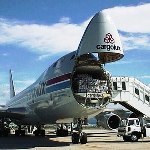
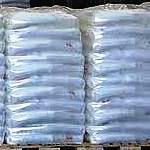

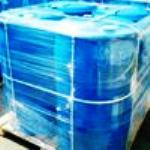
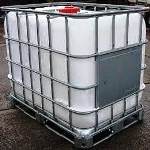
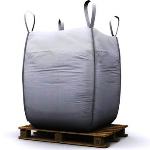
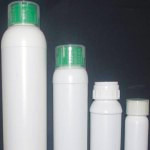
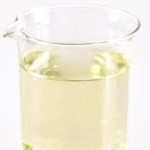
Sucrose Diacetate Hexaisobutyrate or Sucrose Acetate Isobutyrate or SAIB or Sucrose Diacetate Hexa Isobutyrate USP FCC Food Grade CAS Number 27216-37-1 or 126-13-6 or 123-13-6
For Properties Specifications Uses of Sucrose Diacetate Hexaisobutyrate or Sucrose Acetate Isobutyrate or SAIB or Sucrose Diacetate Hexa Isobutyrate USP FCC Food Grade Click Properties, Specifications, Uses, Price, Process of Sucrose Diacetate Hexaisobutyrate or Sucrose Acetate Isobutyrate or SAIB or Sucrose Diacetate Hexa Isobutyrate USP FCC Food Grade Manufacturer.
For For SDS MSDS Sheet of Sucrose Diacetate Hexaisobutyrate or Sucrose Acetate Isobutyrate or SAIB or Sucrose Diacetate Hexa Isobutyrate USP FCC Food Grade Click SDS Safety Data Sheet MSDS Sheet of Sucrose Diacetate Hexaisobutyrate or Sucrose Acetate Isobutyrate or SAIB or Sucrose Diacetate Hexa Isobutyrate USP FCC Food Grade Manufacturer.
The Properties, Specifications, Monograph and Uses of Sucrose Diacetate Hexaisobutyrate or Sucrose Acetate Isobutyrate or SAIB or Sucrose Diacetate Hexa Isobutyrate USP FCC Food Grade :
Sucrose Diacetate Hexaisobutyrate USP Grade Specifications:
C40H62O19 --- 846.92
α-D-Glucopyranoside, 6-O-acetyl-1,3,4-tris-O-(2-methyl-1-oxopropyl)-β-D-fructofuranosyl, 6-acetate 2,3,4-tris(2-methylpropanoate);
6-O-Acetyl-1,3,4-tri-O-isobutyryl-β-D-fructofuranosyl 6-Oacetyl-2,3,4-tri-O-isobutyryl-α-D-glucopyranoside CAS 126-13-6.
DEFINITION
Sucrose Diacetate Hexaisobutyrate consists of a mixture of sucrose esters of acetic and isobutyric acid, with sucrose diacetate hexaisobutyrate being the predominant sucrose ester. It is produced through the controlled esterification of sucrose with acetic anhydride and isobutyric anhydride.
IDENTIFICATION
A. Spectroscopic Identification tests: Infrared Spectroscopy.
B. It meets the requirements in the test for Saponification Value under Specific Tests.
ASSAY
Acceptance criteria: 98.8%–101.9%
Fats and Fixed Oils:
Procedures, Acid Value
Analysis: Add 100 mL of acetone and 0.5 mL of bromothymol blue TS to a 500-mL Erlenmeyer flask. While stirring, titrate the solvent to a bromothymol blue endpoint, with 0.05 N sodium hydroxide. Place the flask with the blanked solvent on a balance and tare. Add between 8–12 g of sample into the flask. [NOTE: The sample needs to be heated first to become a pourable liquid.1 ] The solution will turn yellow if acid is present. If 12 g of added sample does not turn the solution yellow, additional sample may be added up to 100 g by increasing the weight incrementally. If the blue color of the solution is not changed by 100 g of sample after mixing, report the acid value to less than 0.006 (reporting limit). Swirl the contents of the flask to mix. Heat if necessary to dissolve the sample. If heating is required, allow the solution to cool to room temperature before titration. While stirring, titrate the sample with 0.05 N sodium hydroxide to the same blue endpoint as the blank.
Acceptance criteria: NMT 0.2
Fats and Fixed Oils:
Procedures, Saponification Value
Analysis: Weigh accurately about 1.5 g of Sucrose Diacetate Hexaisobutyrate directly into a tared 500-mL Erlenmeyer flask. Accurately dispense or pipet 50.0 mL of 0.5 N alcoholic potassium hydroxide VS into the 500-mL Erlenmeyer flask containing the sample and also into a second 500-mL Erlenmeyer flask to be used for the blank. Add a couple of boiling chips to each flask. Place each flask on a hot plate and connect the flasks to the reflux condensers, which are cooled with water. Reflux the solutions for approximately 1 h. Allow the flasks to cool, then wash down each condenser with approximately 50 mL of water. After the condensers drain, remove the flasks from the condensers. Add approximately 0.2 mL or 10 drops of PhPh to each flask. Titrate the blank and sample solutions with 0.5 N hydrochloric acid until the pink color disappears.
Acceptance criteria: 524–540.
Water Determination: NMT 0.5%
Specifications of Sucrose Acetate Isobutyrate FCC Food Grade:
C40H62O19 Formula weight 846.9 (range 832 to 856)
INS: 444 CAS 27216-37-1
CAS 123-13-6
DESCRIPTION
Sucrose Acetate Isobutyrate occurs as a clear, pale yellow, viscous liquid. It consists of a mixture of sucrose esters of acetic and isobutyric acid, with sucrose diacetate hexaisobutyrate being the predominant sucrose ester. It is produced through the controlled esterification of sucrose with acetic anhydride and isobutyric anhydride. It is very soluble in essential oils such as orange oil, soluble in ethanol and in ethyl acetate, and very slightly soluble in water.
Function: Stabilizer.
REQUIREMENTS
Identification: Identify Sucrose Acetate Isobutyrate by comparing its infrared absorption spectrum with a typical spectrum as shown in the section on Infrared Spectra, using the same test conditions as specified therein.
Assay: Not less than 98.8% and not more than 101.9% of C40H62O19.
Acid Value: Not more than 0.2.
Lead: Not more than 1 mg/kg.
Saponification Value: Not less than 524 and not more than 540.
The MSDS-SDS Hazard Statement of Sucrose Diacetate Hexaisobutyrate or Sucrose Acetate Isobutyrate or SAIB or Sucrose Diacetate Hexa Isobutyrate USP FCC Food Grade :
Sucrose acetate isobutyrate or Sucrose acetoisobutyrate or SAIB Sucrose Diacetate Hexaisobutyrate SDS Safety Data Sheet
MSDS Sheet, Material Safety Data Sheet 06-April-25
Section 1 - Chemical Product and Company Identification
Product Name & Other Names:Sucrose acetate isobutyrate or Sucrose acetoisobutyrate or Sucrose Diacetate Hexaisobutyrate or SAIB.
CAS Number: 27216-37-1 or 126-13-6
EINECS EC Number: 204-771-6
Molecular Formula: C40H62O19
Molecular Weight: 846.92
Relevant uses and uses advised against (if any): Industrial Manufacturing.
Section 2 - Hazards Identification
GHS, Globally Harmonized System Classification in accordance with 29 CFR 1910
Classification according to Regulation (EC) No 1272/2008
Not a hazardous substance or mixture according to Regulation (EC) No. 1272/2008.
This substance is not classified as dangerous according to Directive 67/548/EEC.
Labeling according to GHS USA & Regulation (EC) No 1272/2008
GHS Label Elements NONE |
Signal Word: None
Precautionary statements:
P261: Avoid breathing dust/fume/gas/mist/vapors/spray.
P262: Do not get in eyes, on skin, or on clothing.
P281: Use personal protective equipment as required.
P302+P352: IF ON SKIN: Wash with plenty of soap and water.
P304+P340: IF INHALED: Remove victim to fresh air and keep at rest in a position comfortable for breathing.
P305+P351+P338: IF IN EYES: Rinse cautiously with water for several minutes. Remove contact lenses, if present and easy to do. Continue rinsing.
P337+313: If eye irritation persists get medical advice/attention.
Section 3 - Composition, Information on Ingredients
Product Name & Other Names:Sucrose acetate isobutyrate or Sucrose acetoisobutyrate or Sucrose Diacetate Hexaisobutyrate or SAIB.
CAS Number: 27216-37-1 or 126-13-6
EINECS EC Number: 204-771-6
Section 4 - First Aid Measures
Always consult a physician after the first aid is given.
Eyes: Immediately flush eyes with plenty of water for at least 15 minutes, occasionally lifting the upper and lower eyelids. Get medical aid.
Skin: Flush skin with plenty of soap and water for at least 15 minutes while removing contaminated clothing and shoes. Get medical aid if irritation develops or persists.
Ingestion: Do NOT induce vomiting. If victim is conscious and alert, give 2-4 cup full of milk or water. Never give anything by mouth to an unconscious person. Get medical aid.
Inhalation: Remove from exposure to fresh air immediately. If breathing is difficult, give oxygen. Get medical aid. Do NOT use mouth-to-mouth resuscitation. If breathing has ceased apply artificial respiration using oxygen and a suitable mechanical device such as a bag and a mask.
Section 5 - Fire Fighting Measures
General Information: As in any fire, wear a self-contained breathing apparatus in pressure-demand, MSHA/NIOSH (approved or equivalent), and full protective gear.
Flammability: Flammable. Explosive in presence of oxidizing materials.
Extinguishing Media: Use Water, dry chemical powder, alcohol foam, water spray or fog. Cool containing vessels with water jet in order to prevent pressure build-up, auto-ignition or explosion. Avoid solid water jet as it may scatter the fire.
Section 6 - Accidental Release Measures
Personal precautions, protective equipment and emergency procedures: Avoid breathing dust/fumes/gas/mist/vapors/spray. Use individual protective equipment (waterproof boots, suitable protective clothing, safety glasses, etc.).
Environmental precautions: Do not let the product enter drains, soil or water sources.
Methods and materials used for containment Cleanup procedures and Storage: Contain spilled material. Cover with an inert, non-combustible absorbent material, (e.g. sand, earth, diatomaceous earth, vermiculite). Vacuum or sweep-up and remove to an approved disposal container. Use proper personal protective equipment. Use water spray to dilute spill to a non-flammable mixture. Use water spray to disperse the gas/vapor.
Section 7 - Handling and Storage
Precautions for safe handling: Avoid ingestion and inhalation. Do not allow contact with heat. Apply according to good manufacturing and industrial hygiene practices. Ensure proper ventilation. Wash thoroughly after handling. Do not drink, eat or smoke while handling. Avoid contact with skin, eyes and clothing. Minimize dust generation. Avoid breathing dust/fumes/gas/mist/vapors/spray. Keep container tightly closed. Avoid ingestion and inhalation. Use individual protective equipment (waterproof boots, suitable protective clothing, safety glasses, etc.).
Conditions for safe storage, including any incompatibilities: Store in cool, dry and ventilated area away from heat sources and protected from sunlight in tightly closed original container. Keep air contact to a minimum. Do not leave the material container open. Store protected from heat, sparks and ignition sources and incompatible materials. Avoid inhalation of dust/mist/vapor. Do not store with incompatible materials like oxidizing agents.
Section 8 - Exposure Controls, Personal Protection
Airborne Exposure Limits: Not established.
Ventilation System: A system of local and/or general exhaust is recommended to keep employee exposures low.
Personal Respirators (NIOSH Approved): For conditions of use where exposure to dust or mist is apparent and engineering controls are not feasible, a particulate respirator (NIOSH type N95 or better filters) may be worn.
Skin Protection: Wear impervious protective clothing, including boots, gloves, lab coat, apron or coveralls, as appropriate, to prevent skin contact.
Eye Protection: Use chemical safety goggles and/or full face shield where dusting or splashing of solutions is possible. Maintain eye wash fountain and quick-drench facilities in work area.
Other Control Measures: Maintain good housekeeping in work area. Handle in accordance with good industrial hygiene and safety practice.
Section 9 - Physical and Chemical Properties
Appearance: Colorless to faint yellow viscous liquid.
Odor: Almost odorless.
Odor threshold: Not applicable.
pH: No data found.
Relative density: 1.15
Boiling Point: 288C literature.
Melting Point: -7C.
Flash point: No data found.
Auto-ignition temperature: No data found.
Decomposition temperature: No data found.
Upper/lower flammability or explosive limits: No data found.
Vapor pressure: No data found.
Vapor density: No data found.
Evaporation rate: No data found.
Flammability (solid, gas): No data found.
Partition coefficient: n-octanol/water: No data found.
Solubility: Insoluble in water. Soluble in most organic solvents.
Viscosity: No data found.
Section 10 - Stability and Reactivity
Chemical Stability: Stable under normal temperatures and pressures.
Conditions to Avoid: Incompatible materials, exposure to heat, spark.
Incompatibilities with Other Materials: Oxidizing agents.
Hazardous Decomposition Products: Carbon monoxide, irritating and toxic fumes and gases, carbon dioxide.
Hazardous Polymerization: Will not occur.
Section 11 - Toxicological Information
Acute toxicity: LD50 Oral Rat: 25600 mg/kg.
Carcinogenicity: None of the components of this formulation are listed as a carcinogen by IARC, NTP or OSHA..
Mutagenic Effects: No data found.
Developmental Toxicity: No data found.
Reproductive Effects: No data found.
Section 12 - Ecological Information
Toxicity to fish: LC50 (Pimephales promelas (fathead minnow)): > 1.82 mg/l Exposure time: 96 h.
Environmental Fate: No data found.
Persistence and Degradability: No data found.
Mobility: No data found.
Bioaccumulation/ Accumulation: No data found.
Results of PBT and vPvB assessment: No data found. for assessment.
Section 13 - Disposal Considerations
Whatever cannot be saved for recovery or recycling should be managed in an appropriate and approved waste disposal facility. Follow all the pollution control rules.
Section 14 - Transport Information
DOT USA, TDG Canada & ADR/RID Europe: Not controlled.
IMDG/IMO: Not controlled.
IATA: Not controlled.
Section 15 - Regulatory Information
USA:
Section 313: No chemicals are reportable under Section 313.
SARA 311/312 Hazards: No SARA hazards.
California Prop. 65 Components: Not listed.
Disclaimer:
**************************
Our company provides this MSDS sheet in good faith but makes no representation as to its comprehensiveness or accuracy. This SDS sheet is intended only as a guide to the appropriate precautionary handling of the material by a properly trained person using this product. The above information has been compiled from various sources and has the possibility of discrepancy and being out-dated information. Individuals receiving the information must exercise their independent judgment and do further search in determining its appropriateness for a particular purpose. In no case shall our company be liable to loss or damages by the product user.
**************************

Sucrose Diacetate Hexaisobutyrate or Sucrose Acetate Isobutyrate or SAIB or Sucrose Diacetate Hexa Isobutyrate Manufacturers, Suppliers, Exporters, Wholesalers:
King of Chemicals manufacturers

Plot No. 2900/46&47 + 2900/163to167, GIDC, Ankleshwar, Dist. Bharuch, India
India, USA, UAE
TEL: (Office) 91-22-23774610, 91-22-23723564
e-mail: info@kingofchemicals.com
Copyright and Usual Disclaimer is Applicable --- April 6, 2025
If I give you “My Word” Nobody can undo it.
If I sign an “Agreement” my Lawyer will undo it
Our products are for industrial and laboratory use only. The user must test the material before use. We are not dispensing chemists or druggist and do not offer over the counter type (OTC) products for medical use by individuals.
We and our associates manufacture pure chemicals surpassing Monograph Specifications of Analytical Reagent Standards, British & European Pharmacopoeia BP Ph Eur EP Standard, US Pharmacopoeia USP NF Standard, Indian Pharmacopoeia IP Standard, Japan Pharmacopoeia JP Standard, FCC Food Grade Standard. |
|
|
Sucrose Diacetate Hexaisobutyrate or Sucrose Acetate Isobutyrate |
|